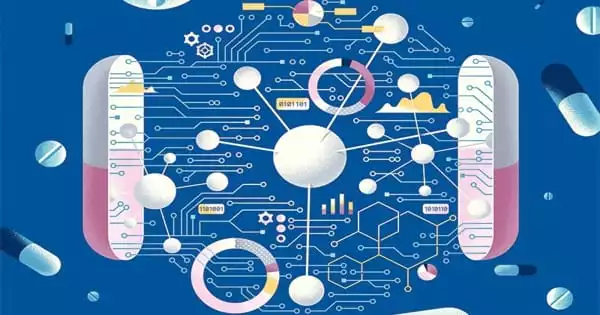The rise of many deadly diseases, such as infections caused by multidrug-resistant bacteria, necessitates re-inventing the drug discovery wheel. A better understanding of disease metabolism and regulation, advances in knowledge based on the genomes of disease-born microorganisms, the development of more representative disease models, and advancements in techniques, technologies, and computation applied to biology are all advances that will aid in drug discovery in the coming years.
Queen’s University Belfast researchers have created a computer-aided data tool that could improve treatment for a variety of illnesses. The computer modeling tool will predict novel binding sites for potentially more selective drugs, resulting in more effective drug targeting, increased therapeutic efficacy, and reduced side effects.
The data tool or protocol will lead to the discovery of a new class of compounds: allosteric drugs in G protein-coupled receptors (GPCRs). GPCRs are the most numerous membrane protein families that transduce signals from hormones, neurotransmitters, and other endogenous molecules inside cells.
We have developed a novel, cost-effective, and rapid pipeline for the discovery of GPCRs allosteric sites, which overcomes the limitations of current computational protocols such as membrane distortion and non-specific binding.
Dr. Irina Tikhonova
GPCRs are drug targets in many therapeutic areas due to their broad influence on human physiology, including inflammation, infertility, metabolic and neurological disorders, viral infections, and cancer. Currently, GPCRs are involved in the action of more than one-third of all drugs. Despite the significant therapeutic success, the discovery of GPCR drugs is difficult due to promiscuous binding and the resulting side effects.
Recent research indicates the existence of additional binding sites, known as allosteric sites, to which drugs can bind and provide a variety of therapeutic benefits. Allosteric sites and drugs, on the other hand, have mostly been discovered by chance. Recent advances in X-ray crystallography, which determines the atomic and molecular structure, and cryo-electron microscopy, which provides 3D models of several GPCRs, provide opportunities to develop computer-aided methodologies for searching for allosteric sites.

The researchers created a computer-aided protocol to map allosteric sites in GPCRs in order to begin the rational search for allosteric drugs, which could lead to new solutions and therapies for a variety of diseases.
“We have developed a novel, cost-effective, and rapid pipeline for the discovery of GPCRs allosteric sites, which overcomes the limitations of current computational protocols such as membrane distortion and non-specific binding,” says Dr. Irina Tikhonova of Queen’s University’s School of Pharmacy.
“Our pipeline can identify allosteric sites quickly, making it suitable for industrial settings. As a result, our pipeline is a viable solution for starting the structure-based search for allosteric drugs for any membrane-bound drug targets with an impact on cancer, inflammation, or CNS diseases.”
Finding drugs that have the potential to be commercially or publicly successful requires a complex interaction between investors, industry, academia, patent laws, regulatory exclusivity, marketing, and the need to balance secrecy with communication. Meanwhile, for disorders whose rarity precludes large commercial success or public health impact, the orphan drug funding process ensures that people suffering from those disorders have some hope of pharmacotherapeutic advances.















